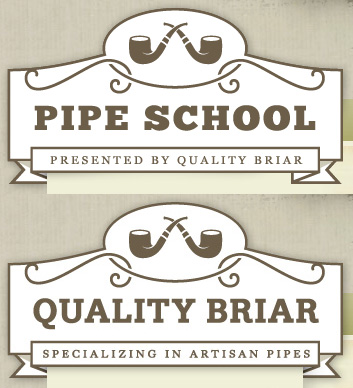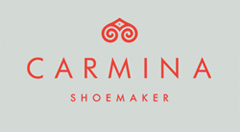In a blog on this site back in September, https://www.craighobson.com/archive/qualitybriar/2011/09/the-price-of-information/, Chris Lee expressed an understandable dismay at the prices of briars being offered for sale on Chinese sites, amounts which appeared to reflect a 300% markup. In thoughtful reply, Warren Wiguto speculated that those figures might well reflect a combination of market availability, as well as the allure of the “exotic, rare or luxurious”. Reading Mr Lee’s blog, I felt a weight rise from my shoulders. Finally, someone started a dialog on a subject that many are aware of, but no one seemed to want to discuss, and Warren’s hypothesis is undoubtedly part of the equation. For a few years I have studied the Chinese pipe market, mainly concentrating on the trail of the product from the source, and the subsequent pricing at the end. So, how do the briars get there, and why is the end user paying what seems to be an exorbitant tribute? Here’s the skinny.
Without question, the ‘exotic’, ‘rare’, and ‘luxurious’ have an allure to the nouveau riche (in China, ‘parvenu’ would be hardly appropriate, would it?), and with China’s booming economy, the nouveau riche aren’t exactly in short supply. While we are at it, let’s toss in a touch of ‘the forbidden’. Though China’s consumer policies are considerably more liberal than in the past, high end foreign luxury goods still retain a whiff of taint that lingers from the ‘interesting times’, and while a wealthy customer is more than happy to flaunt a new bit of luxury to envious friends, he doesn’t want to create any ‘trouble’ when obtaining it. Never underestimate the value-added perceived by that last aspect. Why do Americans pay premiums to stock their humidors with Cuban cigars, in order to hand out something impressive to a buddy? How does roughly $1300 of processed coca leaf wind up *wholesaling* for about $30,000 in Atlanta? Precisely for the same reason that a wealthy pipe collector in China will part with three times as much as a Yank for the same goods: human nature.
A bit more baseline. On the merchant side, while straight up (declared), direct-source importation of foreign pipes into China isn’t illegal, it’s certainly a stone-bitch to do so. The paperwork alone would be enough to make a sane man believe that he was Eleanor Roosevelt’s bathrobe inside of three months, and that man is totally familiar with the byzantine ways of customs. On the buyer’s side? Overlooking a language barrier and the use of online translators which seem do everything but translate, imagine trying to surf for merchandise from the other side of the ‘Bamboo Curtain’. Ok, you have found something that’s caught your eye, but you are dealing with foreigners, and you are the one who has to get that $3500 ‘wood hobby toy’ from customs into your collection.
Cut to the chase: As a Chinese pipe shop owner, you contact a high volume Western e-tailer in the guise of a collector, and start buying. Looking at the shopping list, there doesn’t seem to be any commonality that we would normally associate with collecting (shape preference, finish, size, or maker). The only things of interest are the most expensive selections from the most well-known of American carvers, and anything Danish that starts at about $1600. As far as any interest in Japanese high grades? Errmmm, not so much (laughs). The briars will usually be shipped to the most trade-friendly zones (Hong Kong and Shanghai would be good examples). No need to haggle on price, because you will keystone the amount you just paid to that budding collector who drives a Bentley, and that customer will be beaming with pride as they drive off.
To the Chinese pipe seller, CPCC = High-end RTDA. Seriously. More than a couple of American pipe makers have told me that, well prior to the show, they were visited by well dressed, nicely mannered Chinese men (oddly enough, none of whom ever seemed to be smoking a pipe), whom, with almost no real examination of their product, offered to take everything… cash. Naturally, though thrilled with the idea of a 90 second sell-out, the CPCC represents the biggest advertising investment that a solo artisan can make, and how do you cultivate new customers when you have nothing to show? Any partial demurral on the part of the maker; ‘Sure, but can you take delivery late Sunday, and let me display my work with a ‘sold’ tag on it until then?’, or ‘I would really like to retail at least four of those myself’, is nipped in the bud. The gents are on a tight schedule, and hanging out another 4 days with pipe collectors is the last thing that they are interested in. It’s all, it’s now… or it’s nothing. I, for one, admire the fortitude that it takes to turn a deal like that down, and I have yet to run into a Yank that has taken them up on it.
I don’t begrudge the Chinese retailers a damned thing. On this side of the pond, both the artisan and retailer are paid full boat and, on the other side of the Pacific, wealthy customers are happy to pay their reseller keystone for the convenience. While I am not thrilled to have slightly less product to choose from, I do take some (guilty) pleasure in knowing that most of the pipes that are being offered over there are the stuff we Yanks already took a pass on over here.
Just my two Yuan,
Bear Graves





 Subscribe to RSS feed
Subscribe to RSS feed